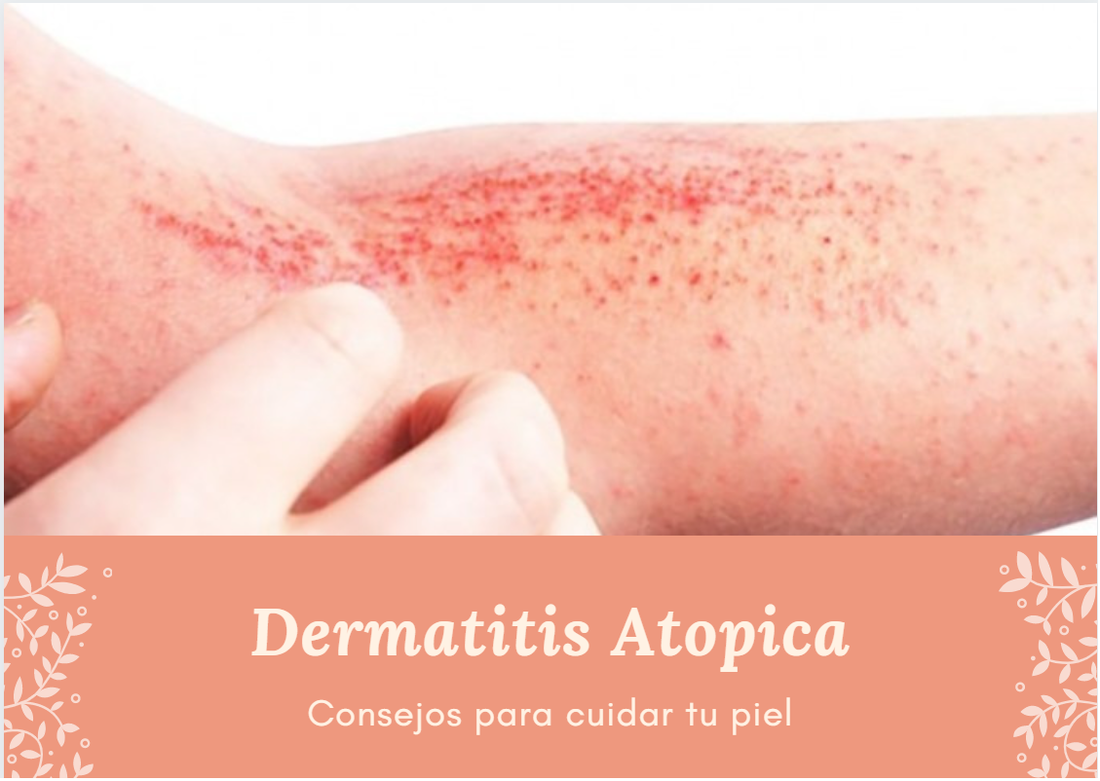
TIPS FOR CARING FOR SKIN WITH ATOPIC DERMATITIS
Share
What is atopic dermatitis?
It is a skin disorder that is very common in children and babies . It can begin as early as 2 months of age and usually disappears by adulthood .
It's a type of chronic eczema that causes itchy, scaly rashes . People with atopic dermatitis have more sensitive skin because they lack certain proteins responsible for maintaining the skin's protective barrier. This is the main cause of atopic dermatitis; skin with a worn-out protective barrier that's unable to protect us from external aggressions.
How does the skin of people with atopic dermatitis feel?
Signs and symptoms vary widely from person to person, but most present with:
- The skin is dry, even with flaky areas.
- Small blisters that may ooze fluid and form scabs if scratched.
- Raw skin due to scratching that can lead to infection
- Red to grayish-brown spots.

In children under 2 years of age : Lesions begin on the face, scalp, hands and feet.
In older children, lesions are most often located on the inside of the elbows and knees.
In adults, lesions may be limited to the hands, eyelids, or genitals.

To control atopic dermatitis we must break the vicious cycle of scratching-itching.
This cycle begins with a weakened skin barrier that allows any external aggression to affect the skin, causing itching. When something itches us, our first instinct is to scratch to relieve the itch. This triggers an inflammatory reaction that produces eczema. Eczema causes more itching, which forces us to scratch more, promoting the development of wounds and scabs that can become infected.

How do we break the cycle of itching and scratching?
Home skin care will reduce the need for medication and space out flare-ups.
It's important to break this cycle of itching and scratching to prevent eczema from developing. The more you itch, the more you scratch, the more eczema you'll get.
To break this cycle and prevent flare-ups , we must repair the skin barrier using specific creams with high moisturizing properties and active ingredients that repair the skin barrier. We should choose products that do not contain alcohol, perfumes, or skin irritants. It is best to use specific products for treating atopic dermatitis, such as:
Pharmacological Treatment:
Typically, the first medication prescribed for people with atopic dermatitis is a cortisone (steroid) cream or ointment . These medications are very useful for controlling flare-ups , but they have some drawbacks: They can cause skin atrophy; weaken the skin's natural defenses; stretch marks; facial acne; pigmentation disorders; decreased healing… We must keep in mind that the more you use them, the less effective they are in treating dermatitis. This is why it is very important to use non-medicated creams that repair the skin barrier, helping to space out flare-ups as much as possible and thus reducing the need for medication.

If corticosteroids fail to control the flare, we may need a stronger medication:
Topical immunomodulators such as tacrolimus or pimecrolimus act by deactivating the inflammatory response of the skin in patients older than 2 years. They should be administered for short periods of time , while long-term treatment should be administered intermittently, using the lowest doses necessary to control the patient's symptoms .
Creams or ointments containing coal tar or anthralin can be used for thickened areas.
Oral antihistamines are very useful for relieving itching or allergies.
Other medications that may be used:
- Antibiotic creams or pills if your skin becomes infected
- Drugs that suppress the immune system
- Specific biologic medications designed to affect parts of the immune system involved in atopic dermatitis
- Phototherapy, a treatment in which the skin is carefully exposed to ultraviolet (UV) light
- Short-term use of systemic steroids (steroids administered orally or through a vein)
It's very important to protect your skin from the sun with 50 SPF sunscreen, as most medications used for this condition react with the sun, causing photosensitivity and dark spots.
Factors that complicate or worsen the symptoms of atopic dermatitis:
-Allergies
- Dry winter air (drier skin)
- Contact with irritating materials (perfumes, soaps, alcohol)
- Emotional stress
- Dry skin
- Dry skin due to very long showers or baths
Advice from your apothecary:
The first and most important rule is Prevention : We must take measures to avoid outbreaks and, to the extent possible, identify the triggers.
Treat and cleanse your skin daily using specific creams that repair the skin's barrier function and specific Syndet soaps (so-called soap-free soaps) that respect the barrier function.
Expose your skin to water for as short a time as possible (water dries out the skin) . Short baths with cool water are better than long baths with warm water.
Once the bath is finished, we must dry the skin carefully to avoid chafing and irritation.
Use specific sun protection for atopic skin.
Avoid rubbing with synthetic clothing.
Keep your nails trimmed to avoid injuries caused by scratching.
